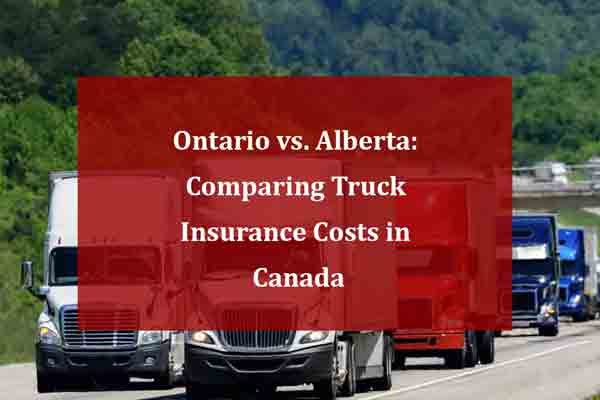Canadian trucking companies face dramatically different insurance landscapes depending on their operating province. Recent data shows Ontario truckers pay 35-60% higher premiums than their Alberta counterparts for similar coverage. This staggering difference stems from provincial regulations, risk factors, and insurance market structures that directly impact your bottom line.
For owner-operators and fleet managers, understanding these regional variations could mean saving thousands annually on commercial truck insurance. This 2024 comparison breaks down the key differences between Ontario and Alberta, with actionable strategies to optimize your insurance costs regardless of location.
Why Ontario’s Truck Insurance Costs Are Among Canada’s Highest
1. No-Fault Insurance System
Ontario’s no-fault system means each driver’s own insurer covers their injuries regardless of fault. While this speeds up claims, it has led to:
- Higher claim frequencies (20% more injury claims than Alberta)
- Increased fraud risks (estimated at $1.6B annually across all auto insurance)
- Complex dispute processes driving up administrative costs
2. Dense Urban Corridors
The Greater Toronto Area (GTA) accounts for:
- 42% of Ontario’s trucking accidents (MTQ 2023 report)
- 57% higher premiums than Northern Ontario routes
- Frequent congestion increasing low-speed collision risks
3. Regulatory Environment
Ontario’s insurance framework includes:
- Strict minimum liability requirements ($1M standard)
- Heavy regulatory oversight limiting insurer flexibility
- High healthcare costs factored into injury claims
*2024 Average Premiums (Single Truck Owner-Operator):*
- Toronto/GTA: $14,000-$18,000
- Northern Ontario: $10,000-$13,000
- Cross-border operators: +25-40% surcharge
Alberta’s Competitive Truck Insurance Advantage
1. Private Insurance Market
Alberta’s system allows:
- More insurer competition (30+ providers vs Ontario’s limited market)
- Risk-based pricing flexibility
- Customizable coverage options
2. Lower Population Density
With fewer urban choke points:
- 30% fewer accidents per km traveled (AIT 2023 data)
- Reduced theft/fraud incidents
- More predictable risk modeling
3. Favorable Legal Environment
- Tort-based system discourages frivolous claims
- Capped lawsuit damages for minor injuries
- Faster claims resolution (average 22 days vs Ontario’s 47)
*2024 Average Premiums (Single Truck Owner-Operator):*
- Calgary/Edmonton: $8,500-$11,000
- Rural Alberta: $7,000-$9,500
- Mountain routes: +15-25% surcharge
Cost-Saving Strategies for Both Provinces
For Ontario Operators:
- Increase deductibles strategically ($5K+ can reduce premiums 15-25%)
- Implement telematics for usage-based insurance discounts
- Restrict GTA operations where possible (reroute through 400-series bypasses)
- Challenge rate classifications with safety documentation
For Alberta Operators:
- Bundle multiple policies (average 18% discount available)
- Maintain clean CVOR (one violation can increase costs 30%+)
- Opt for winter tire credits (save 5-7% November-April)
- Negotiate fleet discounts at 5+ units (volume savings up to 22%)
Emerging Trends Affecting Both Markets
- Electric truck premiums currently 12-18% higher (battery replacement costs)
- Cyber insurance add-ons becoming standard for ELD-equipped fleets
- Climate change impacts increasing weather-related claims in both provinces
Conclusion: Turning Knowledge Into Savings
While Alberta’s truck insurance market remains more cost-effective, Ontario operators can still achieve significant savings through proactive risk management. The key is understanding your provincial system’s unique drivers and working with specialized brokers who know how to navigate each market.

